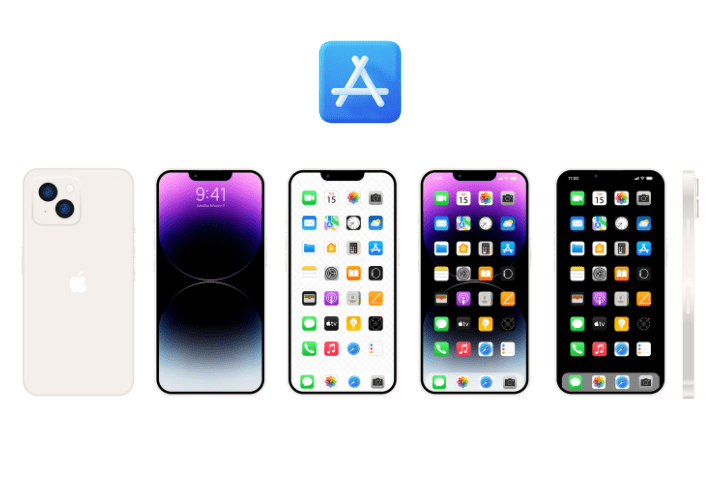How to Get App Store Back on iPhone?

I never anticipated my iPhone to see the App Store disappearing. Assuming it would always be there when we need it, it is one of those basic apps we take for granted. But one day, I noticed the App Store icon had vanished as I was going to download a fresh App. Though I briefly panicked, I inhaled deeply and resolved to attack the issue squarely. I’ll walk you through exactly how to get App Store back on iPhone.
The Initial Shock
It began on a typical morning. Testing a new workout app that a buddy recommended delighted me. I activated my phone and slid across my home screens, and suddenly it struck me—the App Store icon vanished from view. I experienced both uncertainty and annoyance. It was unbelievable; how could a tool as vital as the App Store vanish?
Step 1: Checking for Restrictions
I immediately looked to see whether the App Store was blocked. Sometimes, particularly if you share your smartphone with family members or if parental controls are turned on, specific features or apps can be restricted.
- Go to Settings: I opened the Settings app.
- Navigate to Screen Time: I tapped “Screen Time” after sliding down.
- Check Content & Privacy Restrictions: I next clicked on “Content & Privacy Restrictions.”
- Check iTunes & App Store Purchases: I chose “iTunes & App Store Purchases” and made sure ” installing Apps” was set to “allow.”
The limits were gone, so this wasn’t the problem—relievedly. Still, it was a decent starting point to cut.
Step 2: Searching for the App Store
Apps can occasionally be relocated to separate home screens or concealed within folders. I searched to be sure I hadn’t missed the App Store.
- Swipe Down: I swiped down from the middle of the home screen to bring up the search bar.
- Search for App Store: typed “App Store,” looking for an App Store.
Should the App Store be installed but under disguise, it would show up in the search results. Sadly, it didn’t show up, hence the app was either deleted or not displayed because of some other problem.
Step 3: Resetting Home Screen Layout
I then resolved to change the home screen configuration. If an app has been inadvertently relocated or hidden, this option brings all default apps back to their original positions.
- Go to Settings: Once again, I accessed the Settings app.
- Navigate to General: I tapped “General” and slid down.
- Choose Reset: I tapped “Reset.” at the bottom.
- Reset Home Screen Layout: I decided on “Reset Home Screen Layout” and validated my decision.
Although the App Store was still absent, this operation brought my home screen back to normal.
Step 4: Updating iOS
Missing apps occasionally can be an iOS version-related problem. I made sure my software was current.
- Go to Settings: Open the Settings app from Settings.
- Go to General: I tapped “General” and slid down.
- Select Software Update: Choose a software update. I used “Software Update.”
Fortunately, there was a change ready. With hopes this will fix the problem, I downloaded and set it up. I double checked my home screen following the update, but the App Store remained absent.
Step 5: Restoring from Backup
I turned to restore my iPhone from a past backup as a last choice. This approach would bring my gadget back to a condition when the App Store still existed.
- Backup Current Data: To prevent losing any recent data, I first made sure to back up my current data to iCloud.
- Go to Settings: I launched the Settings app.
- Tap on [My Name]: I tapped my name right at the top of the settings.
- Choose iCloud: I then tapped “iCloud.”
- Choose iCloud Backup: I started with “iCloud Backup” and then changed to “Back Up Now.”
Once the backup was complete, I proceeded with the restoration.
- Go to Settings: I started the Settings app in Settings.
- Navigate to General: I tapped “General” and slid down.
- Choose Reset: I tapped “Reset.” at the bottom.
- Erase All Content and Settings: I chose to “Erase All Content and Settings” and verified my choice.
My iPhone came back on, then I worked through the setup. When asked, I decided to restore from an iCloud backup and choose one from a date knowing the App Store was there.
Step 6: Contacting Apple Support
The App Store was at last back following restoration. If this had not succeeded, though, I would have next gone to Apple Support. Their experience helps them to solve problems not amenable to simple troubleshooting.
- Visit the Apple Support page: I would have gone to the Apple Support website.
- Choose iPhone: Made their way to the section on iPhones.
- Choose a topic: Choose the pertinent subject, say “Apps & Features.”
- Chat or Call: Selected to either arrange a call or chat with a support agent.
Conclusion
Though it was strange to see the App Store vanish from my iPhone, it gave me a lot of knowledge about my device and how to properly debug it. I fixed the problem by methodically looking for restrictions, looking for the App, reseting the home screen layout, updating iOS, and restoring from a backup. Ultimately, I discovered that even if technology can be erratic if you remain cool and carefully address the issue, there are always answers accessible.
Reiterating my conviction in the endurance of both technology and patience, getting the App Store back seemed like a little triumph. Should you ever find yourself in similar circumstances, I hope these guidelines serve as great a benefit as they did for me.
Also Read: How To Stop Call Recording Announcements?


